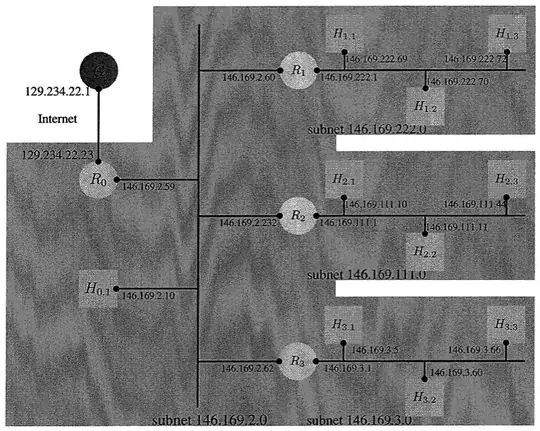I am currently practicing for my network & communications course and have managed to confuse myself slightly on a question about packet round trip time. I have made a start but am now a bit stuck!
Disclaimer: This is not homework, just a practice question I am having a go at.
Question
If all subnets operate at 100Mb/s, the maximum length of any subnet is 200m, and signal propagation speed is 200 x 10^6m/s, estimate the round-trip time that would be reported by ping when using 50,000 byte sized packets between H3.1 and H1.1 (such that 50,000 bytes have to be sent from H3.2 to H1.1 and back again).
Information Provided
The information we are provided is that the network is a class B network with address146.169.0.0 and the subnet mask is 255.255.255.0
(There are therefore 256 subnets, 146.169.0.0 -> 146.169.255.0 each with 256 addresses)

How far I've got
I have managed to work out that to go from H3.2 to H1.1, there will be the following route:
H3.2 -> R3 -> R1 -> H1.1 which is 3 packets. Therefore with 3 packets back, thats 6 in total.
Since the maximum length is 200m, this suggests that the total distance form H3.2 to H1.1 and back cannot exceed 1200m.
It also suggests that since there are 6 packets, each carrying 50,000 byte packets, thats a total of (50000 * 6) * 8 bits transferred in total.
From here I'm at a bit of a loss as to how to proceed. I could theoretically do S = D/T rearranged to be T = D/S and therefore T = 1200 / 200*10^6 but that seems too simplistic and doesn't use the network speed in any way, nor the number of bits.
I'm sure I'm missing something simple here but I figured a network guru here would probably be able to solve this in 10 seconds so it was probably worth asking!
Will continue my trials and come back to this if I get an answer!
Thanks!